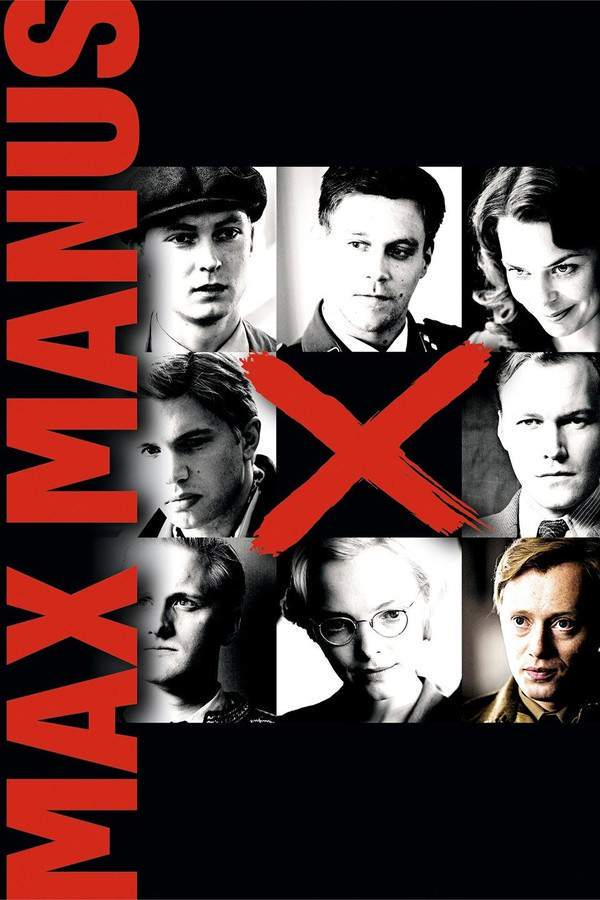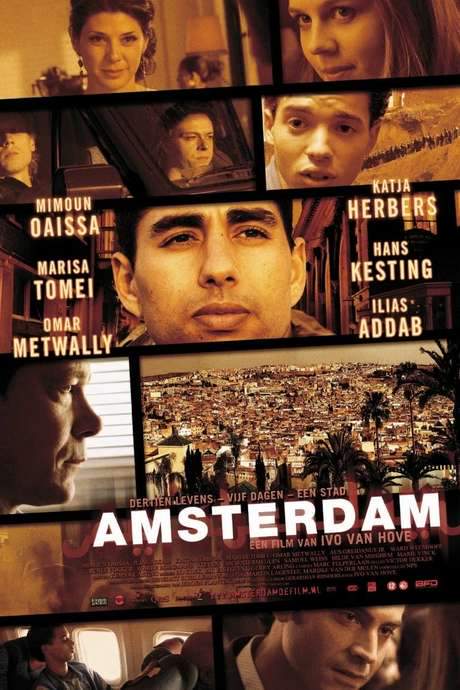
Max Havelaar
Year: 1976
Runtime: 170 mins
Language: Dutch
Director: Fons Rademakers
An idealistic Dutch colonial officer stationed in 19th‑century Indonesia believes he can enact reforms that will truly benefit the Javanese people under his authority. However, he soon discovers how disconnected he is from the realities of colonial rule, and his well‑meaning efforts rapidly spiral into deeper disaster.
Warning: spoilers below!
Haven’t seen Max Havelaar yet? This summary contains major spoilers. Bookmark the page, watch the movie, and come back for the full breakdown. If you're ready, scroll on and relive the story!
Max Havelaar (1976) – Full Plot Summary & Ending Explained
Read the complete plot breakdown of Max Havelaar (1976), including all key story events, major twists, and the ending explained in detail. Discover what really happened—and what it all means.
In the 1860s, a small boy named Saïdjah grows up on a farmer’s plot in Parang Koedjang, Lebak Regency, in the Dutch East Indies. He plays with his kerbau in the sawah while his father and elder brother toil with a small band of farmers. A sudden danger appears when a Javan tiger lunges at his kerbau, yet Pantang—the buffalo He and his family care for—manages to survive and even strike back. The villagers soon face another threat: the Demang of Parang Koedjang, a powerful local official named Raden Wira Koesoema, arrives on horseback with a warning to pay tribute to the Regent, who grows increasingly displeased with the local leadership. Faced with a lack of money to meet the tribute, the villagers’ hopes crumble as Pantang is seized by the Demang. Saïdjah’s elder brother tries to resist, but is shot by a KNIL soldier, and his body is left behind, neglected by those who should protect the people.
Meanwhile, back in Amsterdam, a contrasting world unfolds on a Christmas night. A sermon extols wealth and prosperity in Java, a colony under Dutch rule, yet it overlooks the abuses simmering beneath the surface. Into this frame steps Max Havelaar, an ex-Assistant Resident who left office and now wanders unemployed. He reconnects with his childhood friend Batavus Droogstoppel, who runs a coffee trading company, Last & Co. Havelaar seeds the idea of writing a book about coffee trade injustices, drawing on essays he had crafted during his service. Droogstoppel reads one such piece, “On the Coffee Auctions of the Dutch Trading Company,” and the larger tale of colonial exploitation begins to unfold in Lebak as early as 1855, setting the stage for a confrontation with a system built on abuse and opacity.
In Lebak, a pivotal and perilous shift occurs with the poisoning of Slotering, Christiaan Ernst Pierre Carolus—known as Slotering—the Assistant Resident of Lebak. At a banquet hosted by the Regent, Raden Adipati Karta Nata Negara, Slotering dies of a supposed fever, but the real motives are murky: the Regent’s possible knowledge of secret papers detailing his crimes may have sealed Slotering’s fate. The Resident of Bantam, Slijmering, is drawn into a conspiracy linked to the Regent, and the Gouverneur-Generaal’s image of justice appears complicated and compromised. As Havelaar steps into his new role as the successor of Slotering, greeted warmly by the Regent and his Demangs, he takes an oath in the Regency royal house, accompanied by his controller Verbrugge. The surface calm, however, hides a web of coercion and complicity.
From the outset, Havelaar learns that the social order in Lebak rests on fear and coercion. His first inklings come when a simple speech to the local chiefs triggers demands for advance tax payments, even though there is no budget to support them. His wife, Tine (known as Poesje to some) voices concern about the personal cost of his decisions, but Havelaar convinces her that if the Regent has money, he might stop seizing it from the people. Yet the reality is far different. Soon Havelaar witnesses the grim truth: land and labor are requisitioned for the Regent’s own use, with sawahs abandoned as men are forced to clean the Regent’s compounds or prepare aloen-aloen for royal visits. The suspicion grows that the Demang of Parang Koedjang is looting kerbaus for the Regent’s banquets, a claim Havelaar tests by questioning Säidjah’s father and pressing the Demang for answers. The truth is painful—villagers fear the Demang more than the Dutch authorities themselves, and the family’s integrity buckles under pressure.
The tension deepens as Havelaar’s inquiries unfold. He records witnessing the burning of clothes by the Demang to render the villagers cold at night, and Säidjah’s father dies in fever after the Demang’s escalating coercion. Säidjah himself confronts Havelaar with the truth, even presenting the kerbau’s head as evidence of the looting. Havelaar trembles at the prospect of presenting his indictment to a court that already seems compromised by the powerful. Säidjah, fearing the system’s corruption and the court’s sway, chooses exile in Lampong with rebels, a move that underscores the broader resistance brewing among the colonized.
As events escalate, Slijmering, the Bantam Resident, blocks Havelaar’s attempt to press charges—threatening to remove him from his post if he persists. Despite the growing danger, Havelaar tries to bring the Regent to a formal trial, but the court absolves the Regent, finding insufficient evidence, and even dismisses Havelaar as a target of decision. The justice system appears irrevocably corrupted, and Havelaar responds by resigning from his post as Assistant Resident. He then seeks redress at the highest levels, inviting the Gouverneur-Generaal to witness the systemic failings firsthand. With his wife and son by his side, Havelaar travels to Buitenzorg to knock on the doors of power, only to be confronted by an aide who is also the Gouverneur-Generaal’s confidant. In a cruel twist, Havelaar is locked away and told to return to the Netherlands, his voice silenced as the empire’s machinery grinds on.
The final moment of the tale is a furious indictment. Facing the wall, Havelaar shouts at a painting of King William III, calling on the monarch to bear responsibility for the immoral corruption festering in the colonial system. The story closes on a note of righteous fury and unresolved grievance, painting a broad portrait of a society where wealth and power are guarded at the expense of the vulnerable.
This epic, sprawling account interweaves a child’s brutal early losses, a reformer’s noble but doomed efforts, and a colonial machine that resists scrutiny. It renders a portrait of brutality masked as governance, and of a man who refuses to stay silent even when wreckage follows in his wake. The narrative remains faithful to its core: the fight against oppression, the cost of moral courage, and the hard, often costly road to accountability in a world where power often goes unchecked.
Last Updated: October 09, 2025 at 09:31
Unlock the Full Story of Max Havelaar
Don't stop at just watching — explore Max Havelaar in full detail. From the complete plot summary and scene-by-scene timeline to character breakdowns, thematic analysis, and a deep dive into the ending — every page helps you truly understand what Max Havelaar is all about. Plus, discover what's next after the movie.
Max Havelaar Timeline
Track the full timeline of Max Havelaar with every major event arranged chronologically. Perfect for decoding non-linear storytelling, flashbacks, or parallel narratives with a clear scene-by-scene breakdown.

Similar Movies to Max Havelaar
Discover movies like Max Havelaar that share similar genres, themes, and storytelling elements. Whether you’re drawn to the atmosphere, character arcs, or plot structure, these curated recommendations will help you explore more films you’ll love.
Explore More About Movie Max Havelaar
Max Havelaar (1976) Scene-by-Scene Movie Timeline
Max Havelaar (1976) Movie Characters, Themes & Settings
Max Havelaar (1976) Spoiler-Free Summary & Key Flow
Movies Like Max Havelaar – Similar Titles You’ll Enjoy
Max Manus (2010) Ending Explained & Film Insights
De Scheepsjongens Van Bontekoe (2007) Detailed Story Recap
The van Paemel Family (1986) Ending Explained & Film Insights
The Good Hope (1986) Full Movie Breakdown
De Vlaschaard (1983) Complete Plot Breakdown
Going Home (1993) Movie Recap & Themes
Outcast of the Islands (1951) Full Summary & Key Details
The Flying Dutchman (1995) Story Summary & Characters
Max & Jeremie (1992) Film Overview & Timeline
November 1828 (1979) Story Summary & Characters
Amok (1934) Plot Summary & Ending Explained
Max Manus: Man of War (2008) Film Overview & Timeline
Fair Wind to Java (1953) Detailed Story Recap
Max and the Junkmen (1971) Ending Explained & Film Insights
Amsterdam (2009) Full Movie Breakdown

















